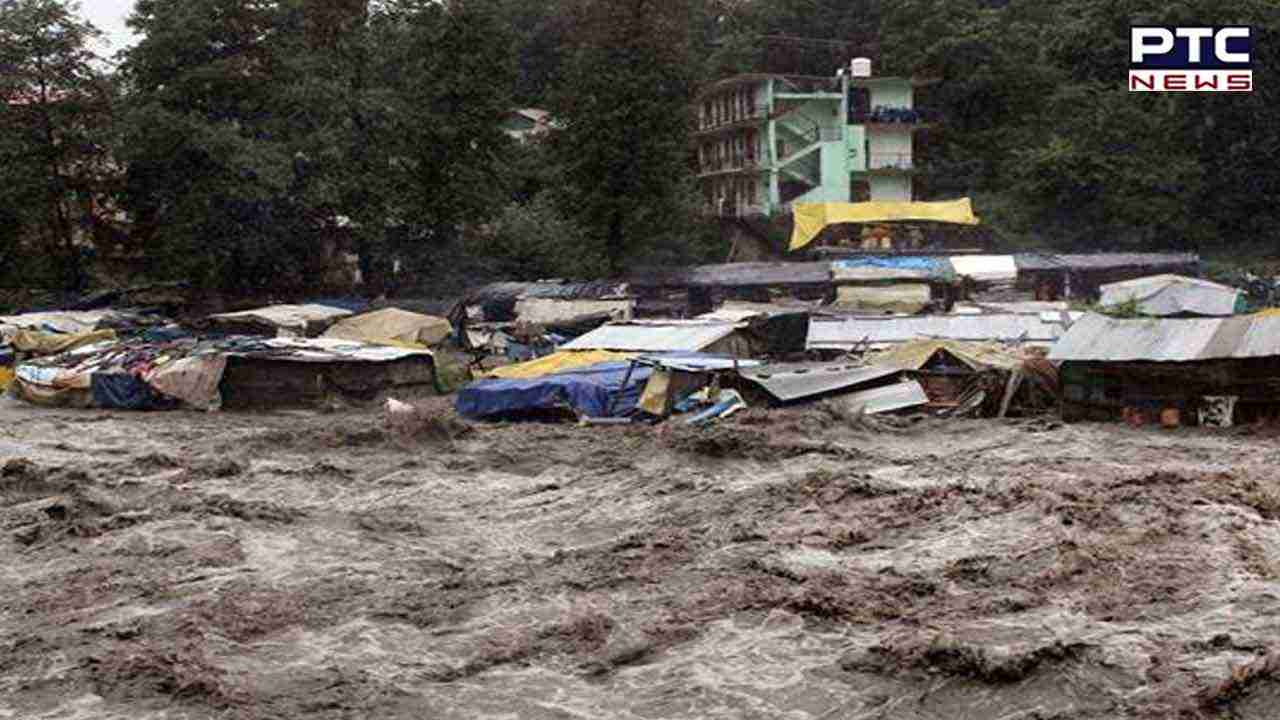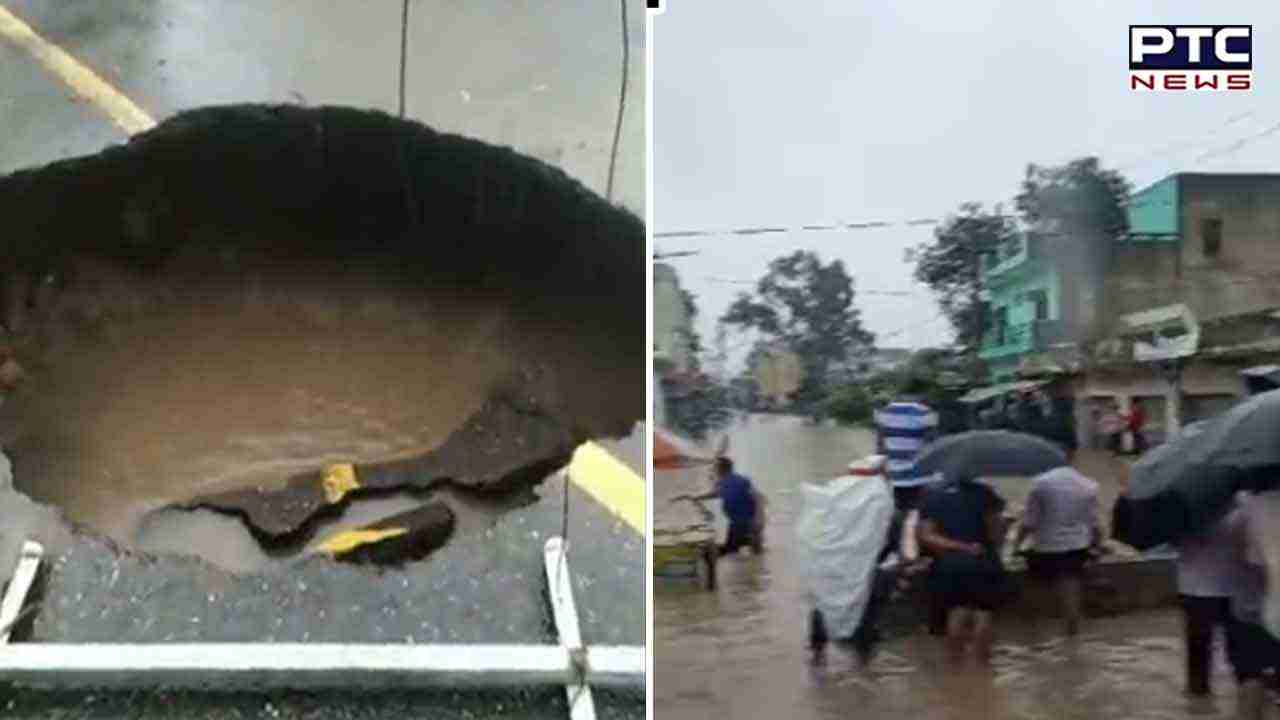

Devastating rainfall claims 15 lives and causes widespread destruction in north India
Chandigarh, July 09: In a recent bout of torrential rains, several parts of North India were severely affected, resulting in the loss of lives and extensive damage to infrastructure. The heavy downpour caused landslides and flash floods, leading to the deaths of 15 individuals. Additionally, major rivers, including the Yamuna in Delhi, swelled due to the continuous rainfall.
Cities and towns across the region experienced significant flooding, with roads and residential areas submerged in knee-deep water.
_3bf88704807b5a4674dd26f1ad84b3dd_1280X720.webp)
The civic system struggled to cope with the record-breaking rains, leaving many areas vulnerable to the deluge. Flash floods washed away roads in hilly regions, stranding people and prompting authorities to advise tourists to defer their visits until the weather improves.
The railway services also suffered disruptions, with the Northern Railways canceling 17 trains and diverting 12 others. Waterlogging forced the suspension of traffic at four locations.
Also Read: Punjab Rain Fury: Ghaggar and Satluj rivers overflow, flood threat looms, NDRF deployed
The India Meteorological Department (IMD) issued heavy downpour warnings for specific areas in Jammu and Kashmir, Ladakh, and Himachal Pradesh. In Delhi, which experienced its highest rainfall in a single day in July since 1982, authorities cautioned about the rising water level of the Yamuna.

According to the IMD, Delhi received 153 mm of rain within a 24-hour period, while Chandigarh and Ambala in Haryana reported record-breaking rainfall of 322.2 mm and 224.1 mm, respectively. Himachal Pradesh, particularly in the seven districts where a red alert for extremely heavy rains was issued, witnessed three separate incidents of landslides resulting in the deaths of five individuals.
The Himachal Pradesh emergency operation center reported 14 major landslides and 13 flash floods in the past 36 hours, leading to the closure of over 700 roads.
Neighboring Uttarakhand also experienced tragic incidents, with three pilgrims drowning in the Ganga after their jeep fell into the river during a landslide near Gular on the Rishikesh-Badrinath National Highway. Additionally, two houses collapsed in the Kashipur area, resulting in the death of a couple and injuries to their granddaughter. In Jammu and Kashmir, two individuals lost their lives when a landslide struck a passenger bus in Doda district.
Also Read: Weather clears up: Amarnath Yatra commences on Pahalgam route again
Furthermore, the bodies of two soldiers, who were swept away by flash floods while crossing the Dogra Nallah, were recovered in Poonch district.
However, there was some relief in Srinagar as the heavy downpour subsided, leading to the resumption of the yatra to the Amarnath cave shrine from the Panjtarni and Sheshnag base camps after a three-day suspension. Reports of snowfall were also received from high-altitude areas of Jammu and Kashmir and Ladakh, where a red alert was issued due to heavy rains.
A red alert was issued for Kathua and Samba districts in Jammu and Kashmir, along with lower catchment areas, as the water level in rivers and streams crossed the danger mark.
#WATCH | Kullu, Himachal Pradesh: Parvati River in Manikaran flooded due to excessive rainfall
(Visuals shot by locals, confirmed by Police) pic.twitter.com/OslUTr8Zjt — ANI (@ANI) July 9, 2023
Flash floods in hill states left approximately 200 people stranded in Chandratal in Himachal Pradesh's Lahaul and Spiti. Moreover, a portion of the Chandigarh-Manali highway was washed away by the surging waters of the Beas river. Landslides and cave-ins caused by the floods made several villages in mountainous regions of Uttarakhand inaccessible by road.
#WATCH | Delhi: The market wall in Sunder Nagar collapsed after heavy rainfall pic.twitter.com/DM0vVcTAa9 — ANI (@ANI) July 9, 2023
Punjab and Haryana experienced heavy monsoon rains, leading to massive waterlogging and flooding in low-lying areas. The Punjab government directed officials to visit affected areas and provide necessary assistance. In Haryana, a flood control room was established due to the close proximity of three rivers—Markanda, Ghaggar, and Tangri—to the danger mark.
Heavy rainfall caused severe waterlogging and traffic congestion in several parts of Gurugram, prompting the administration to advise corporate houses to work from home and schools to declare a holiday.
#WATCH Jammu and Kashmir: A bridge connecting the three areas washed away due to heavy rains in Dudu area of Udhampur.
(Source: Udhampur Police) pic.twitter.com/rD5qptDDcJ — ANI (@ANI) July 9, 2023
To address the worsening situation, Delhi Chief Minister Arvind Kejriwal announced the closure of all schools in the national capital on Monday. Waterlogging resulted in traffic woes, with people navigating flooded roads, vehicles getting stuck, and underpasses becoming inundated.
Uttar Pradesh also witnessed widespread rainfall, leading to unfortunate incidents such as the death of a 10-year-old girl when a tree branch fell on her house in Kaushambi. In Muzaffarnagar, a woman and her six-year-old daughter lost their lives when their house collapsed due to heavy rain. On Saturday, two people were killed, and three others were injured in separate incidents of lightning strikes in Ballia.
#WATCH हिमाचल प्रदेश: मंडी में भारी बारिश के कारण ब्यास नदी का जलस्तर बढ़ा। पानी के तेज बहाव के कारण एक कार बह गई।
(सोर्स: पुलिस) pic.twitter.com/JgGS75ZaLB — ANI_HindiNews (@AHindinews) July 9, 2023
In Rajasthan, heavy to very heavy rains were reported in a few areas, while moderate to heavy rainfall occurred in many regions.
The IMD noted that the plentiful rains in many parts of India during the first eight days of July helped bridge the rainfall deficit for the entire country. The cumulative rainfall for the monsoon season reached 243.2 mm, exceeding the normal value of 239.1 mm by two percent. However, there were significant regional variations in rainfall patterns.
The eastern and northeastern regions experienced a deficiency of 17 per cent, while North India witnessed a surplus of 59 per cent. Central India received an excess of four per cent, while the rainfall deficiency in South India reduced from 45 per cent to 23 per cent.
#WATCH | A large portion of road caved in Delhi's Rohini area after heavy rainfall pic.twitter.com/ujoa37YtjU — ANI (@ANI) July 9, 2023
The IMD attributed the intense rainfall in northwest India, including Delhi, to the interaction between a western disturbance and monsoonal winds. This weather phenomenon caused Delhi to experience its first "very heavy" rainfall of the season.
Also Read: Chandigarh drowns in record-breaking rainfall: Waterlogged streets and traffic nightmare
- With inputs from agencies
